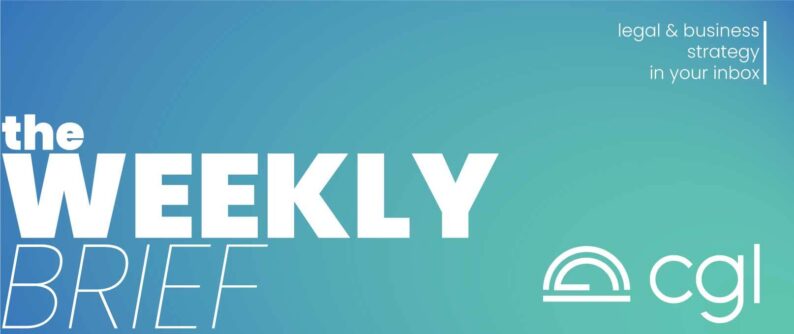We recently came across the term ‘resenteeism’, the 2024 HR trend whereby employees simply coast in roles they don’t like. This trend is a result of the tougher labor market and economic conditions this year (especially with high inflation). Suffice it to say that this will affect your company’s productivity (which is stagnating generally in North America).
Another side of the employee retention coin is that employees who do not like their position are more likely to leave. So, what can be done? Admittedly, some things will be out of your control. You likely can’t control inflation, housing affordability, or your employee’s values. So, it’s best to focus on the elements within your control, including measuring metrics that matter, implementing attractive workplace policies, and communicating your culture.
Employee Retention Metrics
These are some key employee retention metrics you should be tracking:
- Overall turnover: percentage of employees that leave within a set period, typically a year, compared to the total number of employees. Depending on your industry, it may also be worthwhile tracking voluntary and involuntary departure percentages.
- Unplanned absenteeism rate, calculated as days per year per employee. Companies should average these rates across departments or potentially the company as a whole.
- Presenteeism, typically measured through observation.
- Employee satisfaction, measured through employee surveys.
- Productivity metrics can indirectly alert companies to dwindling engagement. Similarly, increasing error rates and/or decreasing Net Promoter Scores can also reveal risks for employee turnover.

Workplace Policies and Culture
Conduct Stay Interviews
Stay interviews are becoming much more popular. If you haven’t heard of them, they are interviews that take place between managers and employees where the worker discusses career aspirations and personal goals.
Buy-in is going to be essential if you plan to implement stay interviews. Employees need to feel safe to discuss employment, which means managers need to be skilled in speaking with them about their career and salary aspirations. Leaders need to respect the process and be responsive to the feedback provided during these interviews.
Here are some questions to consider during stay interviews:
- Engagement: what are you passionate about at work? What are you proud of accomplishing? How satisfied are you with your work-life balance? How could we make your work more engaging? What do you like about your day-to-day work? What do you dislike?
- Personal development: Do you have clear career goals? Is there any training you would like to do?
- Culture: What challenges do you face in maintaining work-life balance? Do you feel supported at work? Are you comfortable providing feedback to your colleagues and/or manager?
- Long-term goals: How does your work fit into your longer-term goals?
Introduce Attractive Workplace Arrangements
The typical employee today wants to work in a hybrid environment for employers that offer health benefits, financial literacy resources, and other personal development and training opportunities, alongside a competitive salary.
If you can provide all the above, it’s a matter of allocating resources in a way that’s meaningful to your employees. If you’re not able to budget for all the above, it’s going to be a matter of prioritizing resources and then allocating that budget meaningfully.
Here are some tips for achieving that:
- Run an employee needs assessment, typically based on anonymized surveys or focus grounds.
- Start small, with one or two initiatives, to gather data about employee interest and perceived value.
- Monitor the program’s impact on employee satisfaction via surveys.
- Source free or low-cost resources, such as online financial literacy or mental health resources or community health screenings.
- Consider creating internal challenges to encourage healthy financial habits, like budgeting workshops and/or debt repayment challenges.
- Keep an eye on the market salary. If you’re falling behind, you should be proactively discussing salary with your employees – or you risk losing them. If you’re aware of what’s happening in the market, you can offer more competitive total rewards packages if you’re unable to compete on salary.
You can learn more about workplace policies to improve employee wellbeing in our earlier post.
Documenting Your Company Culture
Finally, it’s important that you accurately document the key components of your culture. It’s challenging to retain employees for the long-term when your public-facing documents and/or leadership and hiring team tell potential hires that the culture is one thing, when the reality is something completely different.
We suggest focusing on documenting the policies that really impact your employees in their day-to-day such as:
- Personal development budgets.
- Mentorship opportunities.
- Volunteering opportunities.
- Hybrid or flexible work arrangements.
- Feedback and/or complaint processes.
- Diversity and inclusion.
If you need assistance updating your employee handbook, reach out. Our employment attorneys would love to help.
Disclaimer
The materials available at this website are for informational purposes only and not for the purpose of providing legal advice. You should contact your attorney to obtain advice with respect to any particular issue or problem. Use of and access to this website or any of the e-mail links contained within the site do not create an attorney-client relationship between CGL and the user or browser. The opinions expressed at or through this site are the opinions of the individual author and may not reflect the opinions of the firm or any individual attorney.



